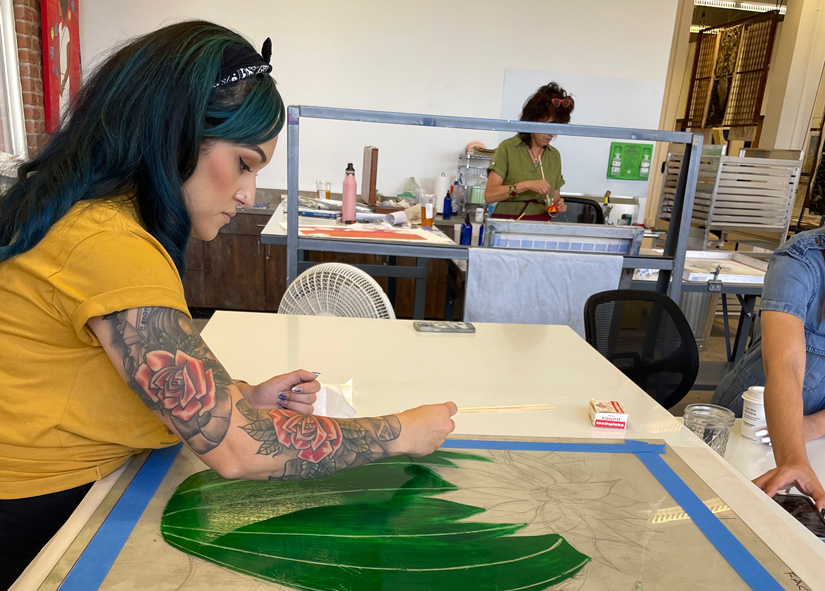Artistic Opportunities
Everyone is an Artist

Current Opportunities
Xico is excited to share the following opportunities with you for this quarter. Please contact us if there are any opportunities.

Call to Artists: Xico Printmaking Residency
Xico is now accepting applications for our 2025 Artist in Residence Program, a three-month residency from May to July 2025. This opportunity provides printmakers with the space, resources, and time to develop new work.
Residency Includes:
– Dedicated studio space
– $4,000 stipend
– Access to resources & a collaborative community
– Opportunities to teach workshops, give an artist talk & more
– Opportunity for a solo or group exhibition
While all printmakers are welcome to apply, we strongly encourage experienced lithographers to take advantage of our lithography space.
Residency dates: May 6 – July 29, 2025
Application deadline: April 18, 2025

Call to Artists: Helios x Xico Student Juried Exhibition
Submit your artwork to be featured in a juried exhibition at Helios Education Foundation, Phoenix, AZ (April – June 2025, exact dates TBD)
Awards: Cash prizes and art supply baskets for Best in Show & Runner-Up in both high school and college categories
Eligibility: Latino/x & Indigenous high school and college students residing in Arizona
Theme: Explore how education transforms lives through empowerment, growth, resilience, and opportunity
Artwork requirements: 2D pieces (painting, drawing, printmaking, mixed media, digital) in 11” x 14” portrait format
Deadline to submit: March 25, 2025
Get Engaged

Exhibition Opportunities
We rotate exhibitions quarterly and always have two shows. If you are interested in showing your work, please contact us.

Teaching Opportunities & Workshop Proposals
Interested in teaching opportunities or leading a workshop? Get in touch!

Volunteer
Would you like get more involved with our vibrant community? Please contact us and a member of staff will reach out.

Mercado
Do you have items that you would like to sell at our Mercado? Let's start the conversation today!

Equipment Rental
Reach out if you are interested in renting some of the equipment in our gallery.

Studio Rentals
Need access to studio space and a press? Come into Xico and make an impression.
